Environmental and ecological science books, field guides, identification and reference books
SPIFFA derives no benefits from recommending and facilitating the purchase of these books,
aside from getting more people interested in, and informed about, the natural world they share
aside from getting more people interested in, and informed about, the natural world they share
Flora of Melbourne
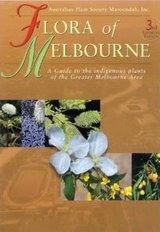
An essential reference
While not quite covering the peninsula, most peninsula indigenous species are in this book
The introductory section has several informative chapters, including Darcy Duggan writing on bushland regeneration techniques
Buy it here
Native Trees & Shrubs of South-eastern Australia
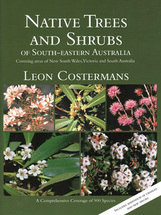
The other essential plant reference, updated in 2009 and incorporating the addendum, with many more smaller shrub species included, previously only available as a CD ROM
Likewise, an illuminating introduction section
Buy it here
Grasses of Temperate Australia - A Field Guide
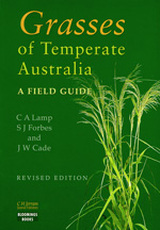
This classic text, first published in 1990, has been extensively revised and updated. It is a comprehensive field guide to grasses that also introduces the amateur botanist to this interesting group of plants. Over 100 grasses have been selected as those that impinge on our daily lives: those species that we may use or, at least, see during our work or recreation (includes weed species)
Buy it here
Native Grasses, an identification handbook for temperate Australia
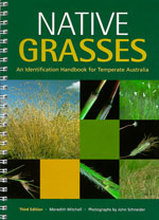
Full colour photographs of the whole plant, as well as close-ups of significant parts of the plants such as the seed head, leaf blade, seed and ligule, accompany each species description
(More a general book about grasses, it features 17 of the most common species)
The handbook provides advice on grassland management as well as providing a greater understanding of the value of native grasses in terms of their benefit to the environment, agriculture, landscaping and upland hydrology
Buy it here
Name That Flower
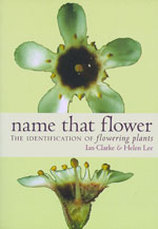
This new edition is extended and updated and includes over 130 detailed line drawings and 12 pages of colour plates. It is an introduction to the arrangement of flowers on plants, reproduction, plant structure and function, and the way plants are grouped and named. Methods for dissecting flowers and observing their structure for identification purposes are clearly described. A comprehensive glossary and up-to-date bibliography provide a welcome guide to further information
Buy it here
Weeds of the South-east
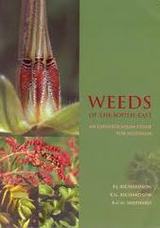
Over 2000 plant species, subspecies, varieties and hybrids, including weeds of agriculture, bushland, waterways, gardens, roadsides, wasteland and amenity areas and many new and emerging problem species. Full colour photos
n.b. many native species are considered weedy in agriculture and as such are listed in this book
Aside from co-authoring and publishing one of the best available weed identification books, the Richardsons have a comprehensive online ecological/environmental bookshop
Many of the links on this page go to their site at weedinfo.com.au
Orchids of Western Port & surrounds

A 41 page book with 128 species and illustrated with wall to wall photographs featuring many different forms of individual species, priced at around $20
Available (with other excellent orchid and aquatic titles) by mail order from Rudie Kuiter at Aquatic Photographics
email [email protected]
Victoria's Orchids
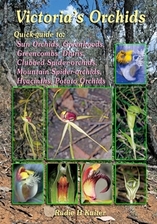
Here a small book for the amateur orchid enthusiast.
Small at A5, but fantastic reproduction. 40 pages and
cover durably coated to take into the field.
Pick-up from Seaford $20 per copy. Express Post is an extra $5
email [email protected]
Mistletoes of Southern Australia
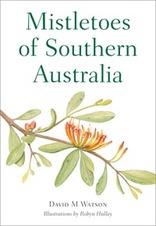
Mistletoes are an enigmatic group of plants. Lacking roots and depending on other plants for their livelihood, they have inspired a range of beliefs throughout the world. Some people regard them as mystical plants endowed with magical properties, others as destructive weeds that devalue native habitats, and still others as beautiful native plants that support wildlife
Features a guide to identifying mistletoes, including detailed species accounts for all 46 species found in southern Australia. With 51 specially commissioned watercolours by artist Robyn Hulley and more than 130 colour photographs, Mistletoes of Southern Australia is the definitive authority on these intriguing native plants
Buy it here
A field guide to Australian fungi
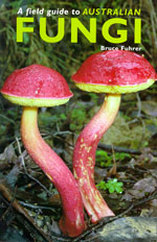
The most comprehensive photographic field guide on Australian fungi yet published.
More than 500 species, all with stunning full colour photographs and descriptive notes. The range of fungi is surprisingly vast, their colours and forms often beautiful. They truly represent an exciting part of nature to study
Buy it here
Flora of Victoria
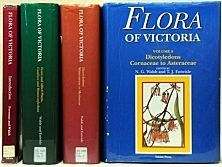
The official flora reference work. Very expensive and out of print
The Flora of Victoria has been digitised and is available here
The introductory volume (pictured at far left) presents summaries for Victoria of palaeobotany, botanical exploration, climate, geology and geomorphology, soils, bioregions, Koori plant use, fire ecology, exotic flora and rare or threatened plants and is worth owning
Out of print volumes may be found through Andrew Isles, BibliOz, Amazon, et al
Volume 1: Introduction
Volume 2: Ferns, Allied Plants, Conifers, Monocotyledons
Volume 3: Dicotyledons Winteraceae to Myrtaceae
Volume 4: Dictyledons Cornaceae to Asteraceae
Birds of Australia field guide

A Field Guide to Insects in Australia
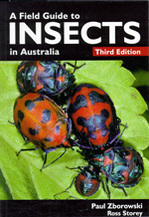
Whether you’re an amateur insect enthusiast, a student or an entomologist, this completely revised edition will help you identify insects from all the major groups
More than 300 colour photographs show the insects in their natural habitat, while many line drawings clearly illustrate subtle differences where identification is tricky
Buy it here
Moths of Victoria
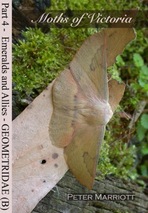
There are now four volumes of this excellent series of picture-rich moth identification handbooks by lepidopterist Peter Marriot and an expanded first volume
The books cover different families of moths. There are more to come With both newer books it has been possible to include more images of live moths as well as the set material. In M of V No. 4 over 85% of the species are figured as living creatures. They are for sale for $12 per volume from the Entomological Society of Victoria by mail order Download the order form at right.... For more info and future volume release notifications contact Peter Marriot |
| ||||||
A complete guide to Reptiles
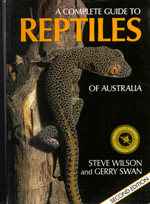
A field guide to mammals of Australia
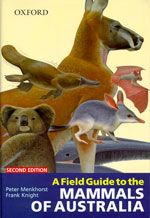
A comprehensive guide, in classic field guide layout, to identifying all 378 species of mammals known in Australia
Buy it here
Tracks, scats and other traces
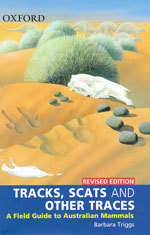
Mammals inhabit every corner of our vast continent, yet the great majority of species are seldom seen. The only clue to their presence might be a footprint left on a muddy track, a scat deposited on a rocky ledge, or bones scattered on a forest floor. This book provides all the information needed to identify mammals anywhere in Australia, using only the tracks or other signs they leave behind
Buy it here
Bringing Back the Bush
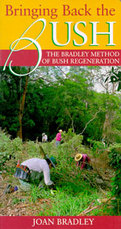
This little book outlines the basic principle and rules that underscore the Bradley method of minimum disturbance/minimal effort bush regeneration and provides the practical techniques required to put them into practice
Buy it here
The Bush Regenerator's Handbook
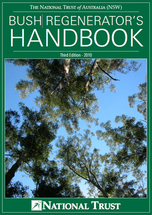
The third edition of the NSW National Trust book, the Bush Regenerator’s Handbook is a technical manual that explains the methods available for controlling a wide variety of weeds that occur in or around bushland.
The second edition was revised in 2010 to include updated details of occupational health and safety and environmental legislation requirements. A section on workplace safety has been introduced. The handbook includes information on weeds of national significance and is now more relevant to broader Australia
You'll need to search the web for this one
Restoring Natural Areas in Australia

A practical handbook for managing natural areas
A lavishly illustrated, full-colour publication, it covers all aspects of natural area restoration projects. You’ll learn how to assess vegetation, map and describe the resilience of remaining flora and fauna, the implications of climate change, and techniques for managing animal and plant pests
Buy it here
Effective Ecological Monitoring
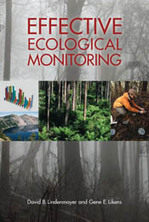
Long-term monitoring programs are fundamental to understanding the natural environment and effectively tackling major environmental problems. Yet they are often done very poorly and ineffectively. Effective Ecological Monitoring describes what makes successful and unsuccessful long-term monitoring programs
Buy it here
What Makes a Good Farm for Wildlife
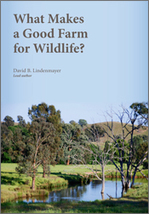
This book brings together extensive scientific learning on what makes a good farm for biodiversity. Based on thirteen years of intensive research, it breaks the discussion into chapters on key environmental and vegetation assets and then discusses how to make these assets better for biodiversity
What Makes a Good Farm for Wildlife? is written in an engaging style and includes colour photographs and information boxes. An important reference for landholders, hobby farmers, vineyard owners, naturalists interested in birds and other native animals, people from Catchment Management Authorities, natural resource managers and policy makers
Buy it here
Wetland Habitats A practical guide to restoration and management
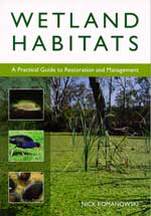
Wetland Habitats is a practical and easy to use manual for wetland restoration and conservation of diverse animal species
Covering all the recent work in the field, among other significant issues it discusses making the most of dams and created wetlands; reversing the effects of drainage, grazing, weirs, deteriorating water quality, and associated algal problems; captive breeding and reintroduction; and controlling weeds and vermin.
Buy it here
Rainforest Restoration Manual for South-Eastern Australia

Extensively illustrated with colour photographs, this book will empower you or your group to be able to restore, manage, protect and conserve the magnificent rainforests that are in your care. The general principles and techniques described will meet the needs of students and teachers, novices, experienced practitioners, community groups and agencies alike
Buy it here
The Mornington Peninsula, through the eye of a Naturalist
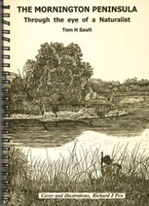
Tom Sault is a name that has become synonymous with the Mornington Peninsula’s natural features.
As someone who had spent over forty years exploring the area, the depth and detail of Tom’s knowledge had become extensive. Unfortunately Tom passed away in 2008, leaving a great sadness for anyone who got to meet him. We are lucky that he had the foresight to create, with Richard Pew, both of them stalwart, long-serving SPIFFA members, a written record of his ecological knowledge of the place he called home for so long.
The text covers many topics from the relationships between geology, flora and fauna to sites to visit
Currently unavailable from the publisher Trust for Nature. Try the book search links at the bottom of the page
Peninsula Perspectives
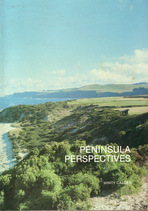
Long-time peninsula resident, historian and prominent woman naturalist, Winty Calder's book is a wide ranging view of the Mornington Peninsula's natural and social history
Winty Calder was responsible for much of the early work attempting to identify and classify vegetation communities, the predecessors of our current EVC classification system, essential for restoration planning
Often, it can take a historian to reconstruct, from original written sources, the natural history of a region after such comprehensive alteration by European settlement
Although out of print, it can usually be found in online booksellers' inventories. See below
The Victorian Bush, it's 'original and natural' condition
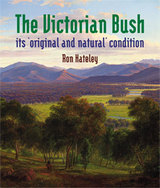
To properly rehabilitate ecosystems, it's logically essential to have an idea of what was there
What were Victoria’s forests and woodlands like before they were so radically disturbed by Europeans, were they being managed by Aboriginal people and to what extent, what was their structure and species composition, what natural phenomena may have been significant influences on them, how healthy were they, and how dynamic were they?
A six-year examination of colonial documents, by the late Ron Hateley (d.August 2011), an eminent forester teaching at the Melbourne University School of Forestry at Creswick for over 30 years, has produced some surprising answers to these questions
Currently out of print but a search of onli e bookstores can turn up a copy
other online book sources

Booko is a site with a very simple goal - to find the cheapest place to buy books & DVDs in Australia. Booko is not an online shop. It goes out to the Internet and looks up
book & DVD prices for you and figures out the shipping costs.
For international sites, the
prices are converted into Aussie dollars. Website here

The biggest Australian scientific and natural resource publisher of books, cd's and journals. Website here

While this firm has a large range of new books, their specialty is second-hand, rare and antiquarian books
Their website is here


Website here
